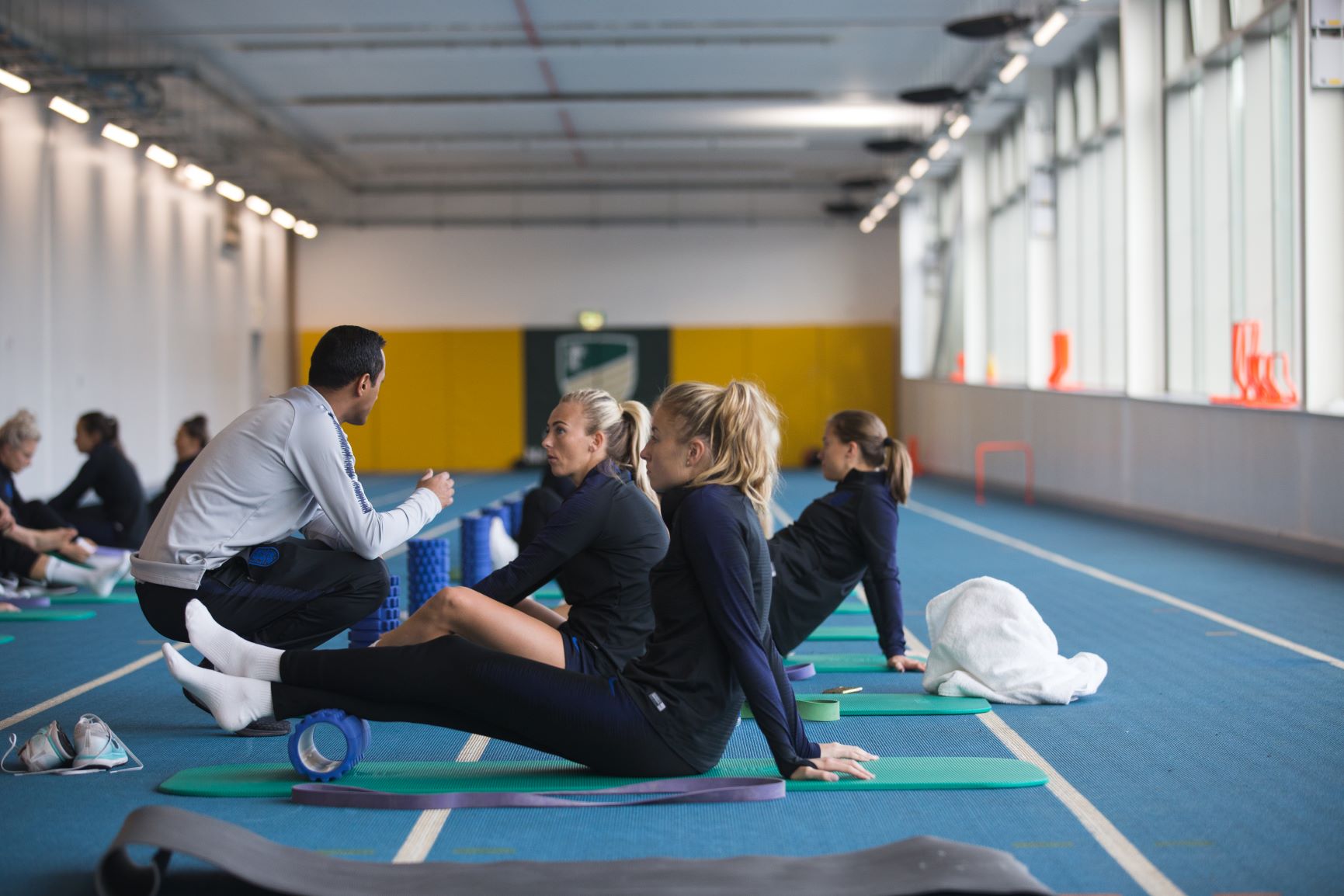
July 6, 2020, by Charlotte Gauja
Make yourself familiar with the Foam Roller
The lockdown has created a situation nobody could have predicted and whilst it has caused peoples lives to turn upside down it is worth looking at the positives. Many people have now found new ways to stay in shape at home. Many people who would have previously avoided fitness training have now become more active.
But the increase in activity we are doing does not come without the consequences. Muscular strains and tears are common side effects of fitness training however preparing your body is key to help prevent these. Making sure you perform a thorough warm-up, focusing on the correct technique and performing a cool down will help reduce the risk. All our online fitness classes go through the right way to prepare the body for the workout.
What can we do when we are not training to help reduce the chances of becoming injured?
Keeping your body mobile is key to preventing injuries. Spending 10 minutes a day performing some gentle stretches will help keep you mobile and performing at your optimum level.
What to do if your movement is restricted and preventing you from stretching?
Our muscles are made up of thousands of muscle fibres bundled together wrapped in connective tissue. The muscle fibres should be smooth for full muscular efficiency, but this is not the case for many of us. During exercise stresses are placed upon the muscle fibres causing micro-tears. These micro-tears will then heal, and the muscle becomes stronger and more efficient. It is this process which gives us the muscular soreness. Unfortunately, this process also leads to scar tissue forming and fibres not aligning which takes away that smoothness which a correctly functioning muscle should have.
What equipment would you recommend?
Foam rollers and spikey balls can help prevent many injuries and improve mobility, but they can also help with conditions such as hyper-kyphosis, lordosis, MS (helps to release muscular stiffness) and joint impingements.
Treatments such as a sports massage can help correct adhesions and release contraction muscle fibres, known more commonly as a “knot”, within the soft tissue. However, due to the social distancing guidelines, these services are reduced to urgent care.
The foam roller is a great tool to self-massage and self-release contracted fibres and adhesions. It is a cost-effective way to improve muscular function when seeing your local therapist is out of the question. Foam rollers utilize bodyweight to compress the targeted muscle and allows for the muscle to be rolled over the roller to give a deep tissue release.
Foam rollers come in different sizes and materials. From the long forgiving foam roller to the less forgiving firm spikey roller. They all serve a purpose but will help release contracted fibres and adhesions.
Spikey balls, lacrosse balls and massage balls are also great tools to use to release tight muscles. These are great for applying pressure to a smaller muscle group or for providing a deeper release on the major muscle groups. Using a small ball is also great for a trigger point release.
The is no right or wrong when it comes to foam rolling but here are some key points to consider:
- Keeping the pressure on the soft tissue is key and preventing the roller from rolling over bony landmarks and joints as this will cause pain and discomfort.
- Ideally rolling should be performed going with the line of muscle fibres which helps lengthen the fibres (for example rolling the calves should but an up and down motion). However, going across the fibres will help broaden the tissue and separate fibres.
- Roll through the tissue until an area of discomfort is found and hold the pressure on this area for 10-15 seconds. Roll past the area and then back over it to ensure the tissue has released.
- Performing active tissue release techniques (ATR) will give better results. These can be done by shorting and lengthening the muscles whilst rolling. For example, when rolling the quadriceps slowly flex and extend the knee to perform the ATR.
Always stretch after using the foam roller as stretching will help lengthen the corrected muscle fibers giving better results. I recommend quick and vigorous foam rolling and dynamic stretches before performing exercises. After completing the exercises allow some time for a slower and thorough foam roll to help with the recovery process. Follow this with strong static stretches, holding for 20 seconds. For best results repeat each stretch twice.
Adding this piece of equipment into our everyday lives will reduce the risk of injury significantly and help with recovery. The foam roller helps improve mobility and allows us to perform at our optimum level. Fewer injuries, faster recovery, improved mobility, better circulation, and great performances.
Whilst rolling can be a painful process to start with, the more rolling is performed the less painful it becomes.
You can find video examples of foam rolling techniques on our Facebook page.
Check out UoNSport’s Health and Wellbeing Home to explore our inclusive offer of health and fitness to try whilst you are in lockdown.
No comments yet, fill out a comment to be the first

Leave a Reply